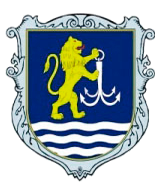MODEL FOR OPTIMAL PLANNING OF MARKETING ACTIVITY OF PLANT, PRODUCTION AND TRANSPORTATION OF PERISHABLE PRODUCTS
Abstract
Introduction. During the last decade in theory of logistics and its applications the great attention was paid to the problem of perishable products flows control that was inspired by foods production/transportation growth. Due to importance of this problem even special direction was formed in logistics, so called “cold logistics” which studies warehousing/transportation problems of perishable items taking into account the special regimes of their storage. The aim of this paper is the further development of approach pointed out above and development of dynamic optimization model for the case of perishable material and finished perishable product coming through the logistic chain taking into account the control of deterioration process at warehouses and increasing the demand for finished product via additional costs for marketing activity. Results. In the article, the dynamic optimization model for planning of raw materials supply, production of perishable finished product and its transportation to destinations is proposed. It is assumed that the additional investments intended for decreasing of raw materials and finished perishable product’s deterioration during its warehousing are provided. The above model is based on the Wagner-Whitin type model in the inventory control theory and classical transportation problem. The objective is to maximize the total profit of supply chain over the given planning horizon. Two cases are considered in details: 1) demand at destinations is given and fixed; 2) demand is controlled by additional investments. Conclusions. Our approach allows to increasing the total profit of logistic system due to additional expenses directed on reduction of deterioration of perishable goods. The calculated results may be useful for logistics operators and other participants of logistic cold chain (e. g. warehouses operators, transport companies). The proposed optimization models are relatively simple and may be implemented in practice with the standard software. In order to conduct calculations it is the necessary to collect the relevant data and to create appropriate databases. The results obtained may be used as the basis for our further investigation and research in the field of “cold logistics”.
Downloads
References
2. Laguerre, O., Hoang, H. M., & Flick, D. (2013). Experimental investigation and modeling in the food cold chain: Thermal and quality evolution. Trends Food Science & Technology, 29 (2), 87–97.
3. Zhang, Y., & Chen, X. D. (2014). An Optimization Model for the Vehicle Routing Problem in Multi-product Frozen Food Delivery, Journal of Applied Research and Technology, 12 (2), 239–250.
4. FAO: Global food losses and food waste – extent, causes and prevention. Rome, 2011.
5. Evans, J. (2011). Effects of food and beverages storage, distribution, display and customer handling on shelf life. In: Kilcast, D., Subramaniam, P. Food and Beverage Stability and Shelf Life, Woodhead Publishing Limited, 273–300.
6. Kundu, A., Chakrabarti, P., & Chakrabarti, T. (2013). Аn EOQ model for time-dependent deteriorating items with alternating demand rates allowing shortages by considering time value of money. Yugoslav Journal of Operations Research. 23 (2), 263–278.
7. Dash, B. P., Singh, D. P., & Pattnayak, T. H. (2014). An Inventory Model for Deteriorating with Exponential Declining Demand and Time-Varying Holding Cost. American Journal of Operations Research, 4, 1–7.
8. Li, R., Lan, H., & Mawhinney, J. R. (2010). A Review on Deteriorating Inventory. European Journal of Operational Research, 3 (1), 117–129.
9. Shah N. H., & Shah, Y. K. (2000). Literature Survey on Inventory Models for Deteriorating Items. Economics Annals, 44, 221–237.
10. Morozova I. V., Postan, M. Ya., & Dashkovskiy, S. N. (2012). Dynamic Optimization Model for Planning of Integrated Logistical System Functioning. In: Kreowski, H.-J., Scholz-Reiter, B., Thoben, K.-D. Dynamics in Logistics, Proc. of 3d International Conference, Bremen, Germany, Springer, Berlin, 291–300.
11. Postan, M. Ya. (2014). Optimal Planning of Integrated Logistical System Functioning Taking into Account Environment Protection. In: Vlachos, I. P., Malindretos, G. Markets, Business, and Sustainability. Bentham e-Books, 205–219. http://ebooks.benthamscience.com/book/9781681080253
12. Postan, M.Ya., & Filina-Dawidowicz, L. S. (2013). Dynamiczny Model Optimalizacyjny Procesu Planowania Zapasow I Dostaw Zroznicowanych Asortymentowo Produktow Szybko Psujacychsiy. In: Semenov, I. N., Wiktorowska-Jasik, A. Transport w Regionie Pomorza Zachodniego. Szczecin, 13–20.
13. Filina-Dawidowicz, L., & Postan, M.Ya. (2016). Optimal Inventory Control for Perishable Items under Additional Cost for Deterioration Reduction. LogForum. 12 (2), 147–156.
14. Postan, M. Ya., & Kurudzhi, V. (2021). Model of Optimal Manufacturing and Delivering of Final Product to Consumers Taking Into Account Cost for Marketing. Development of management and entrepreneurship methods on transport. 2 (75), 66–76.
15. Hadly, G. Nonlinear and dynamic programming. 1964, 414 p.
16. Balinski, M. L. (1961). Fixed cost transportation problem. Naval Res. Log. Quart., 8 (1), 41–54.
17. Williams, A. C. (1963). A stochastic transportation problem. Opns Res, 11 (5), 59–77.





